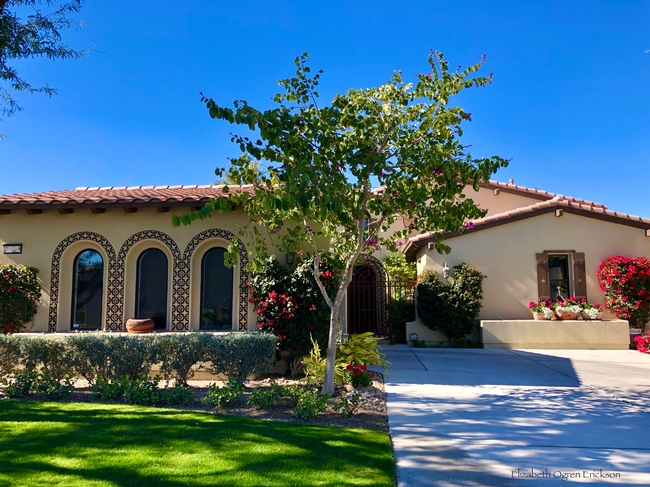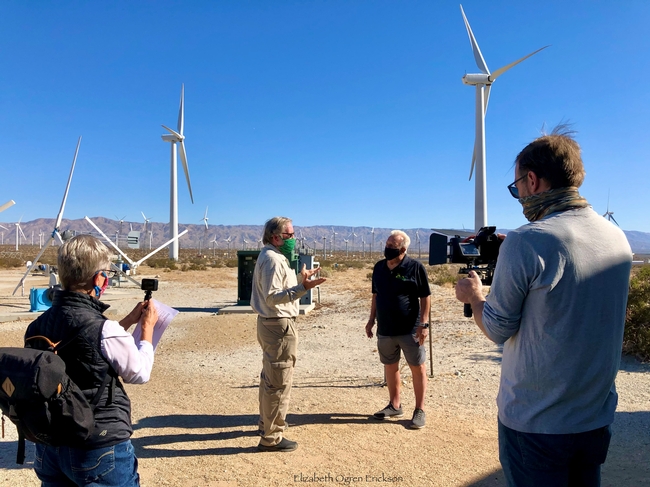UC Climate Stewards take action to protect communities
Water availability, food production and biodiversity are being affected by climate change. There are actions individuals can take to protect their communities. Climate Stewards is a new public education and service effort by the University of California Agriculture and Natural Resources designed to improve climate understanding and empower community-level stewardship.
The first group of certified UC Climate Stewards graduated in December from the 40-hour course taught by Cameron Barrows, UC Riverside research ecologist in the Center for Conservation Biology, at the UCR Palm Desert campus.
“I am already using what I learned!” said Elizabeth Ogren Erickson, who was one of 32 participants in the inaugural UC Climate Stewards course led by Barrows. “Two Coachella Valley organizations contacted me in December, requesting that I speak to their organizations virtually.” She is preparing a presentation that describes the climate crisis and offers some climate resilience solutions.
The Climate Stewards course is delivered through a collective impact network – organizations with common goals, but with unique strengths and strong local connections. To reach a variety of audiences, the organizations tailor the course content and delivery to be culturally relevant and address local needs and priorities. Each participant completes a capstone project as part of the certification process.
Ogren Erickson and her husband Robert Erickson, who took the course with her, assessed landscaping in their neighborhood for their capstone project. Based on their findings, they have proposed landscape changes to their homeowners association. For example, to save water, they propose converting turfgrass areas that are not used for recreation to native plants.
“Did you know that one square foot of turfgrass, on average, requires 73 gallons of water per year, whereas one square foot of desert landscaping, on average, requires only 17.2 gallons of water per year?” she asked.
Hot spot in Coachella Valley
“The Coachella Valley is warming faster than the rest of the planet,” said Barrows, explaining local interest in the program. “The desert community is feeling the effects more rapidly than other places. Scientists say the average desert temperature increase is already above 4 degrees C. Only the arctic is warming faster.
Greg Ira, director of the UC California Naturalist Program, who oversees the new course, said, “The UC Climate Stewards certification course is a first step in a long-term project in which our partner organizations delivering the course will try to improve community resilience to climate change and ultimately measure that change.”
To build their community's resilience to climate change, UC Climate Stewards are encouraged to engage in community-scale efforts, including volunteer service that draws on the knowledge and skills gained from the course. These may include conducting community education and outreach, participating in local adaptation planning efforts, facilitating community and participatory science projects, or addressing issues of environmental or climate justice.
During the course, participants read Climate Stewardship: Taking Collective Action to Protect California written by Adina Merenlender, UC Cooperative Extension specialist, and Brendan Buhler. Rather than a reference text, the book is a collection of stories from diverse voices and shows how specific actions enhance the resilience of communities and ecosystems across California's distinct bioregions.
Together, UC Climate Stewards academic coordinator Sarah-Mae Nelson, Merenlender and Ira form the core UC ANR team who have partnered with local organizations, other UC experts and practitioners around the country to design and move the course forward.
“The program differs from many other climate education efforts because it goes beyond the science of climate change to address the social and emotional challenges climate change presents,” says Nelson. Participants also explore root causes and environmental justice issues. They learn to communicate about climate change and leverage community and state resources to advance collective solutions.
“There are components of the training that are gut-wrenching, like an assignment that relives a personal experience with climate extremes, such as flooding or landslides, and yet every segment of the training is important for each of us to learn, whether an elementary, middle school, high school, or adult education student,” Ogren Erickson said.
While the course was planned to include field trips, because it launched in October amid coronavirus restrictions, Barrows gave the students a tour of a local solar panel construction firm and wind energy site via video.
Measuring community resilience
Before teaching the UC Climate Stewards course, Barrows and one of his co-instructors, Tamara Hedges, the executive director of UC Riverside Palm Desert Center, conducted a baseline community resilience assessment.
The assessment tool – developed by the Community Resilience Assessment Organizations – examines 26 indicators of community resilience in four broad categories: basic needs, environment and natural systems, physical infrastructure and community connections and capacity. They will rank specific actions, for example, reducing food waste at restaurants. Like all Climate Stewards partners, the UC Riverside Palm Desert Center team will repeat the assessment every year to identify changes over time.
To launch UC Climate Stewards, UC ANR collaborated with existing partner organizations from the California Naturalist certification course. To expand the program, they are seeking new partners from a wide range of organizations that have training capacity and an interest in addressing climate change at the community level. Current UC Climate Stewards partners include:
Coastal Training Program - National Estuarine Research Reserves
Community Environmental Council
Conservation Society of California - Oakland Zoo
Pacific Grove Museum of Natural History
Point Reyes National Seashore Association
Riverside-Corona Resources Conservation District
UC Hopland Research and Extension Center
UC Riverside Palm Desert Center
The UC Climate Stewards course is currently being offered online throughout California, but will shift to a hybrid “online and in-person” delivery format when appropriate. For more information about the UC Climate Stewards, and to find a course near you, visit http://calnat.ucanr.edu/cs.




Thankful
Posted by rahsagroup on October 23, 2021 at 4:10 AM